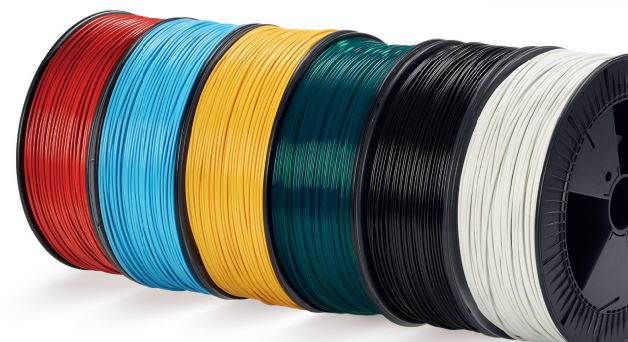PLA - Polylactic acid
PLA Polylaktat Polylactid “Corn Plastic” Polylactic acid
Application:
Plastic packaging - Food packaging – Film – Film -Thread to 3D printers – Transparent labels – Glass – Bottles – Disposable Tableware – Credit card – Unfit for drinks containing carbon dioxide.
Japanese Sanyo Mavic Media has produced a CD disc of corn plastic. The disc can be composted after use.
There developed in garbage bags, directly with compostable content.
There trialled flower pots for planting, decomposition while the plant develops roots.
Spun fibers can be used for clothing, blankets, sanitary napkins, insulating mattresses, etc..
Fire: The plastic having intumescent properties / slow combustion, low smoke production. By incineration of PLA CO², H²O, CO and ash.
Colors: Natural color is transparent / cute / milky white. Available in many colors, in particular to 3D printers.
Moisture absorption: Moisture can pass through the film which include. used for the wrapping of hot cakes and packaging of other food products.
Physiological properties: Meets the requirement of EC 2002/72 and EEC 94/62 . Can meet the requirements FDA (USA).
Trade names: NatureWorks PLA – Ingeo(fibre) – BASF`s Ecovio plastic is made of 45 percent NatureWorks PLA and BASF’s existing biodegradable plastic, Ecoflex, is prepared from petrochemicals.
History: Several chemical companies have through the 1980s to now, researched biodegradable plastics. These include: Ferruzi i Italien. – Kansas State University og Kansas Livestock Association. – Clint Chapple, professor of biochemistry at Purdue University in Indiana. – Knut Meyer of DuPont. Universitetet i i Groningen Holland. The plastic was introduced in the United States years 2000, has advanced rapidly,. Cargill Dow LLC bygger ved Omaha, Nebraska, USA, this year 2002 the first large-scale production to produce PLA .
At the Technical University of Denmark, in Lyngby, scientific research is adding substances, plastic films that can make closer.
Chemical resistance: Resistant to most fats and plant oils.
Chemical structure: The corn is converted to dextrose sugar type, which is fermented to lactic acid, distilled and polymiseres .
Research in cloning and genmanupulering of corn, soybean, and mustard plants, and straw etc.. in order to improve the properties of the plastic.
Used ca. 2,2 kg. corn to 1 kg. Plastic. Pla can be extracted from cheese whey. There may also be used such as starch. wheat or potatoes for bioplastics.

Delivery: Aggregate – foolishness – fiber – welding wire
Mechanical properties: Good strength and stiffness (comparable to PET). Good impact resistance. PLA is a brittle material.
Environment: Biologically degradable plastics. Can composted / degraded by industrial 60 – 80˚C and 60-80 % humidity, in a few months.
Available with certificate, there are used gene-modified maize.
Germany plans from 2012 removing waste charges, from plastic with certificate.
Optical properties: Transparent med as. 5 % light loss.
Surface treatment: Good pressure. Can be metallised with conventional techniques for thermoplastic materials.
Taken: Commodity prices, in contrast to petroleum-based plastics stable, that. at the level of PET and polystyrene.
Injection molding: Excellent
Thermal Properties. Food Trays may be used in the temperature range 0 ° to + 40 ° C.
additives: Can be blended with PET. – Paraffin (using binding agent). – Sukkerstoffet cyclodextrin (can encapsulate natural preservatives).
Thermoforming (Termoformning): Excellent.

